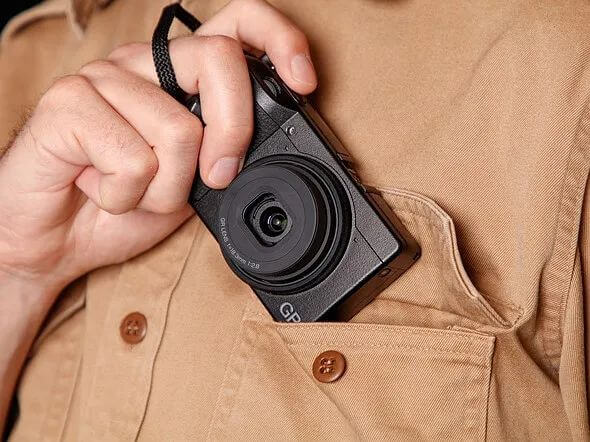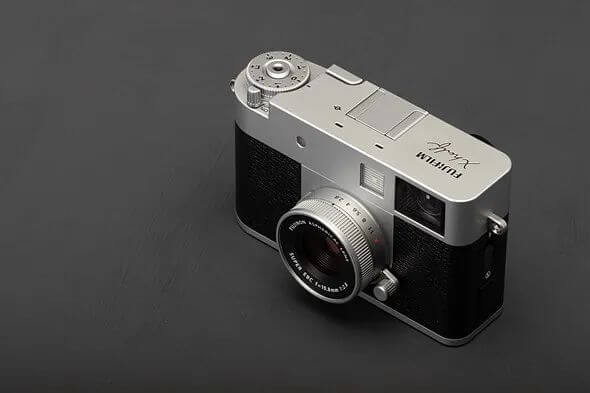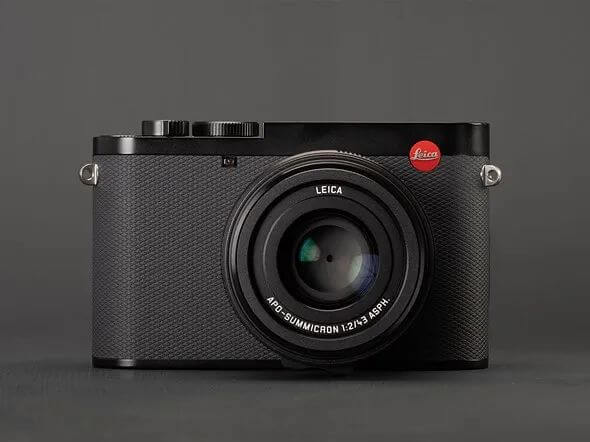
Fixed-lens cameras may be a niche category, but they’ve earned their popularity among photographers for good reason. They often come equipped with some of the best lenses on the market, covering various focal lengths, and are paired with sensors ranging from APS-C to full-frame, offering the perfect field of view for your shooting style.
Our selections range from pocket-sized models to larger cameras that require a conscious decision to carry. They also span a wide price range—while there are unfortunately no budget options, some are significantly more expensive than others, reaching into the thousands of dollars.
Best Fixed-Lens Camera for Enthusiasts: Fujifilm X100VI
40MP BSI CMOS APS-C X-Trans sensor | 35mm equivalent F2 lens | Hybrid viewfinder

The X100VI gets a major upgrade over its predecessor with up to 40EV correction for in-body image stabilization and a 40MP BSI CMOS APS-C X-Trans sensor, despite looking nearly identical. It retains the same 35mm equivalent F2 lens and hybrid viewfinder, which lets you use it as a traditional rangefinder (with some digital enhancements if desired) or a modern fully electronic viewfinder.
The addition of subject recognition autofocus allows the X100VI to identify animals, birds, cars, motorcycles, bicycles, planes, and trains. However, human (face/eye) detection is a separate mode. The lens’s autofocus isn’t the fastest, prioritizing sharpness over speed—though this isn’t unique in this category.
What’s frustrating is that the X100VI has been largely sold out since its launch. But if you’re patient enough to sign up for waitlist notifications on various websites, you might get your hands on one in time.
The wait could be worthwhile. While the X100VI has more dials and features than previous versions, it still delivers one of the most engaging photography experiences. It’s easy to see why it’s frustratingly hard to find: it’s a better follow-up to a camera already beloved by diverse photographers, and it sold out after going viral.
Full-Frame 35mm Option: Sony DSC-RX1R III
60.2MP full-frame BSI CMOS sensor | 35mm F2 lens | Compact body with direct controls

The Sony DSC-RX1R III is the company’s fourth full-frame fixed-lens 35mm camera, now featuring a 60.2MP BSI CMOS sensor.
We’re still reviewing the RX1R III, but in many ways, it’s a full-frame alternative to the X100 series, offering the same focal length and improved image quality from its larger sensor—all in a shockingly compact package. However, we need more time to determine if this justifies its price, which is particularly eye-watering in the US.
What About Large Formats?
Fujifilm also produces the GFX100RF, paired with a 28mm equivalent F4 lens and a 102MP medium-format sensor. While it has merits, we don’t think it excels enough in any area to outperform other competitors on this list. It’s small for its class but not particularly compact; the relatively slow lens and lack of image stabilization limit the scenarios where you can fully leverage its sensor. That said, if you primarily shoot in well-lit conditions, the GFX100RF’s image quality is unmatched for its size.
Best Pocket-Sized Fixed-Lens Camera: Ricoh GR III
24MP APS-C sensor | 28mm equivalent F2.8 lens | Wi-Fi + Bluetooth

The Ricoh GR III is a compact camera with a 24MP APS-C sensor and an extremely sharp 28mm equivalent F2.8 lens—small in size but robust in build quality.
The GR III is the lightest and most compact camera on this list, thanks to its retractable lens and lack of a viewfinder. If size is your top priority, it’s the definitive fixed-lens choice.
Image quality from the GR III is excellent, especially in Raw (we find JPEG colors a bit flat). The lens’s sharpness is impressive, and in-body stabilization lets you confidently shoot at around 1/10 second. The built-in stabilizer can even shake off dust particles from the sensor.
“Offers direct controls and excellent image quality in a portable camera”
Despite its size, the GR III handles well, with well-placed controls, flexible customization options, and a responsive touchscreen. The grip is just right for one-handed use.
The GR III’s short battery life and fixed focal length mean it’s not for everyone, but it’s highly appealing to travel, street, and casual photographers.
A note: Ricoh has announced the GR IV for later this year. If you hate the idea of an updated version launching shortly after purchase, you might want to wait.
A Different Perspective: Ricoh GR IIIx
The Ricoh GR IIIx is just as excellent as the standard GR III but with a 40mm equivalent lens. If you prefer a “normal” field of view over a wider one, the IIIx is the way to go.
Fun-Focused Fixed-Lens Camera: Fujifilm X Half
18MP Type 1 sensor | 32mm equivalent F2.8 lens | Film simulation modes

The X Half is a JPEG-only pocket camera designed for shooting vertical images and mimicking a playful, film-like experience.
This camera is very different from others on the list—its entire purpose is to be fun. With its dedicated film simulation window, built-in diptych feature, and film camera modes, the X Half encourages experimentation with photography. If you find yourself scrutinizing its image quality, comparing it to a mini X100, or getting annoyed that it can’t shoot Raw, it’s a sign it’s not for you.
“It’s all about whether you want a camera that can be called ‘cute’”
It has direct controls for exposure compensation, aperture, and a “film advance” lever. Most other settings are controlled via two touchscreens, one of which mimics a film window.
Autofocus is the camera’s biggest flaw: rather slow and laggy. It can detect faces but doesn’t always focus on them successfully. Still, patience pays off.
The X Half isn’t a serious camera, but it’s a lot of fun. Its price and unreliable people focus give us pause, but we found it consistently charming to use. It all comes down to whether you want a camera that’s “cute” rather than technically outstanding.
The Rolls-Royce of Fixed-Lens Cameras: Leica Q3 43
43mm F2 stabilized lens | 60MP BSI CMOS full-frame sensor | 5.76M-dot OLED EVF

The Leica Q3 43 is a variant of the company’s compact full-frame fixed-lens camera, pairing a 43mm F2 lens with a 60MP BSI CMOS sensor.
While we chose the Q3 43 for its excellent control layout, which prioritizes photography, the camera is also available with a 28mm F1.7 lens. The two Q3 models differ slightly in appearance (e.g., leatherette color) but are otherwise identical—with a $600 premium for the 43mm version.
Image quality is exceptional: the lens is incredibly sharp, with high consistency across the frame even at wide apertures. Brightness noise reduction helps preserve detail at high ISOs.
The Leica Q3 43 is a masterpiece of engineering and design, a welcome new addition to the series.
Controls are minimal but help you focus on core photography settings. Build quality matches what you’d expect from a luxury product.
Autofocus is fast and precise, but the subject recognition system doesn’t let you pre-select focus points, and it may jump between subjects if multiple options are in the scene.
The Q3 43 is an impressive photography tool that feels like a top-tier camera—not just a desirable object.
Source: dpreview, author: Mitchell Clark.
Related Tags: Buy a camera
